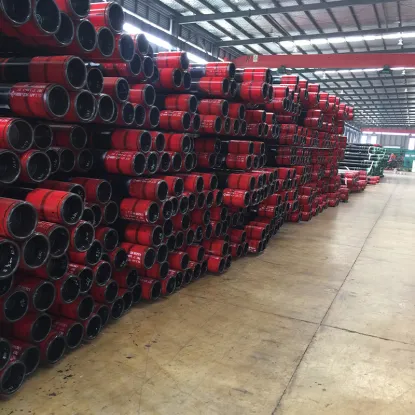What are the different types of OCTG pipes?
Oil Country Tubular Goods (OCTG) are essential components in the oil and gas industry, serving a crucial role in drilling and extraction processes. These pipes come in various types, each designed to meet specific challenges and demands of different well conditions. In this article, we will delve into the different types of OCTG pipes and their applications in the ever-evolving landscape of the energy sector.
Casing Pipes:Casing pipes are an integral part of the well construction process, providing structural integrity to the borehole and protecting the wellbore from external forces. These pipes are typically installed during the drilling process and are designed to withstand the pressure changes, corrosive environments, and other challenges encountered in oil and gas wells. Casing pipes come in different grades and specifications based on the well's depth and the geological conditions.
Tubing Pipes:Tubing pipes are used inside the casing pipes to transport fluids from the reservoir to the surface. They play a crucial role in facilitating the extraction of oil or gas. Tubing is subject to different pressures and temperatures compared to casing, and therefore, it is manufactured with specific materials and specifications to withstand these conditions. Tubing pipes also come in various sizes and grades, tailored to the unique requirements of each well.
Drill Pipes:Drill pipes are essential in the initial stages of drilling. They connect the drilling rig to the bottom of the drill string and carry the drilling fluid to the drill bit. Drill pipes are subjected to high torque and tension during the drilling process and must be robust enough to withstand these forces. These pipes are typically made of high-strength alloy steel to ensure durability and performance in demanding drilling environments.
Pup Joints:Pup joints are short sections of casing or tubing used to adjust the length of the tubular strings in a well. They are employed to fine-tune the overall length and configuration of the OCTG components in the well. Pup joints are available in various lengths and grades to meet specific well requirements.
Couplings:Couplings are connectors used to join two pipes together, ensuring a continuous and sealed connection. They are crucial for maintaining the integrity of the wellbore and preventing leaks. Couplings come in different designs and materials, depending on the application and the type of pipes being connected.
In conclusion, the oil and gas industry relies heavily on a variety of OCTG pipes to facilitate the drilling, extraction, and transportation of hydrocarbons. Casing pipes, tubing pipes, drill pipes, pup joints, and couplings each play a unique role in the overall success and efficiency of well operations. As technology advances and the industry evolves, the demand for specialized OCTG pipes will continue to grow, driving innovation in materials and manufacturing processes to meet the challenging demands of modern energy exploration and production.


Comments
0